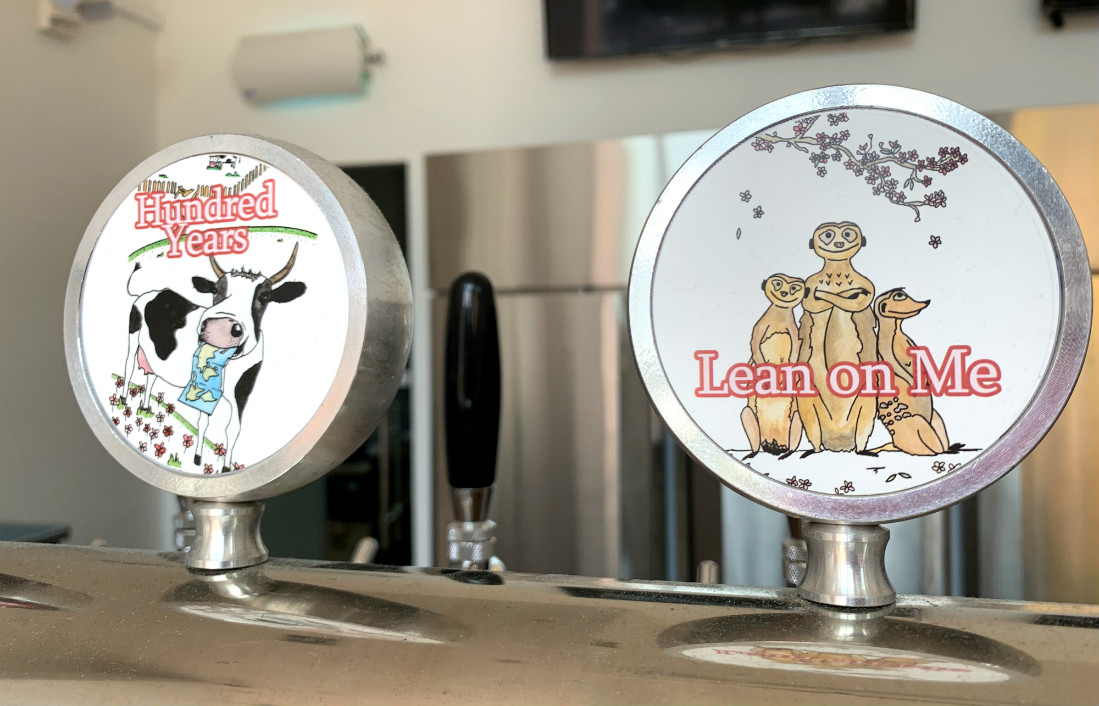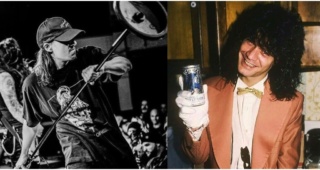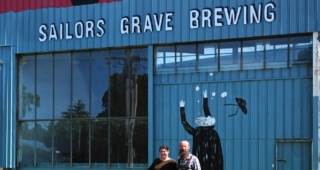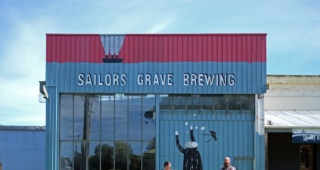When the Tabebuia rosea bloom they tint Singapura in fleeting speckles of brilliant fuschia. The splendor occurs twice a year, lasting only days, and then the trees’ trumpet-shaped begonias fall to the ground, blanketing sidewalks and highways and byways in swaths of pink petals. In just a few more days the flowers wilt black and disappear, forgotten.
“We celebrate beautiful things in life,” says Hong Han Teo, founder of Pink Blossoms Brewing. “The cherry blossom reminds us of spring, and how even though it’s a very short season, it’s one of the most beautiful moments in life.”
Tabebuia rosea, known colloquially as the trumpet tree, are essentially the Singaporean equivalent of the cherry blossom, though they are not a native genus. They blossom during hot dry spells, once in the first half of the year and again in the second. It is easy to confuse them with the sakura that famously herald springtime in Japan; the sakura that for the Japanese epitomize hope, renewal, and life’s ephemeral nature.
Given the sakura’s cultural significance in Japan, it is no surprise that Japanese visitors to Pink Blossoms Brewing’s taproom—and they do come in surprising numbers—often ask Teo about his brewery’s logo and whether it is, indeed, a sakura. “This is basically what the life of a samurai is about,” Teo says. “The sakura symbolizes the life of a samurai because you never know what’s going to happen the next day, so they live every day to the fullest.”
Born in the USA
Trumpet trees are planted along the sidewalk in front of Pink Blossoms Brewing. When I visit the brewery a few weeks before its one-year anniversary party in mid-August, however, the flowers are still a month from blooming and this particular stretch of Ubi, in mideast Singapore, is anything but beautiful.
Airplanes roaring on a final descent into nearby Paya Lebar Air Base, the mechanized wails of automotive parts and service centres, construction trucks rumbling past like thunder, it is like any ugly industrial estate in Singapore, and the shade-less sidewalk does nothing to quell the horrific heat and humidity exasperated fivefold by this clamorous pit of manufactory.


Inside the taproom, silence. Clean white walls. Whimsical watercolor animal paintings. And a thirtysomething, Hong Han Teo, more mild-mannered than Clark Kent on a handful of Xanax. He wears a dark-toned polo, jeans, unremarkable metal-framed glasses, and his short hair with a side part. He speaks earnestly, scrupulously, like a tax accountant giving a court deposition, which makes sense given his professional background as a cross-border tax structuring specialist.
When Teo’s previous employer relocated him to New York, Teo (and his wife) settled into post-gentrified Long Island City and fast became enamored with American craft beer—its flavors, its culture, and in the case of beer from local breweries, its freshness. The pair visited breweries around the country, places like Epic Brewing in Salt Lake City and Allagash Brewing in Portland, Maine, and you probably know where this is going, so let’s skip ahead. You’ve heard this one before.
Related: In Singapore, the Curious Case of LeVeL33
Teo and his wife moved back to Singapore shortly after he earned a diploma from the American Brewers Guild in Vermont. He quit his job, and as essentially a one-man show began the laborious process of opening what would become Pink Blossoms Brewing. “The craft beer scene in Singapore is still very young, and we realized that when we came back we wouldn’t be able to get all these amazing beers anymore, these fresh IPAs, so we set up the brewery,” Teo says. “That is one of the reasons we did this and a dream of ours—to have this style of beer fresh from the brewery.”
Fresh is Best
Some Western beer enthusiasts spoiled by choice and access may scoff at the prospect of waking up early on a Saturday morning to join a brewery’s hours-long line to buy freshly canned IPAs and DIPAs. I get it; the spectacle is a bit much and personally I’m not interested. However, there’s never even been an opportunity for locals to do something like that in Singapore and across Southeast Asia. With the exception of the few Singaporean craft breweries that bottle and/or can, like Brewerkz and Rye & Pint, all packaged craft beer here is imported.
The most reputable breweries and importers ensure cold-chain refrigeration along the way, but there’s no way to escape the inevitable for the types of beers to which Teo refers. “Most of the hazy, highly hopped beers don’t travel well. The journey—three weeks, four weeks, more—does cause a beer to deterioate somewhat, no matter how much care a brewery takes to impact its aging,” says Teo. “To me, the best IPA you can get is from your local brewery. We want Singapore to have the same option we had of popping down to a brewery like Other Half, queuing up, and getting a fresh double dry-hopped IPA.”
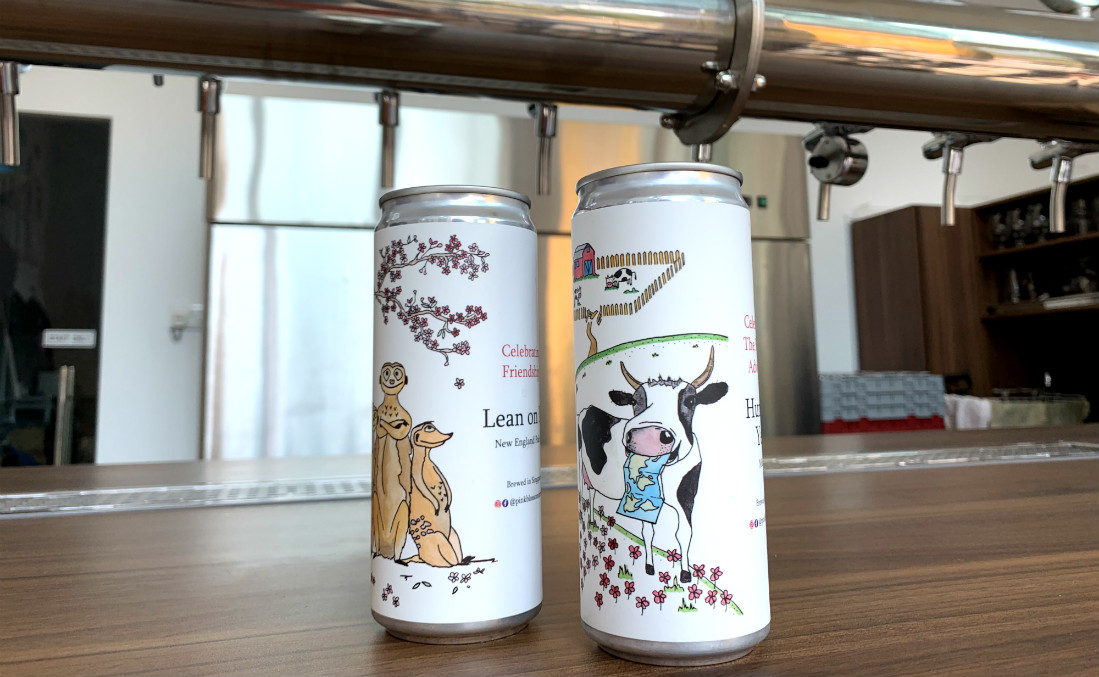
On a weekend afternoon in June, Teo took the first step towards realizing the ambition with a pilot run of what he’s dubbed The Fresh IPA Program. That day marked the debut in cans of Pink Blossoms’ third core beer, Don’t Stop Believing, a 6.8% double dry-hopped New England IPA. Using a tedious semi-manual, semi-automatic canning line that allowed quality checks for every can, Teo and his cousin did as many as they could the day before the release.
However many they canned were all gone the next day. Three months later Teo tweaked the idea with a second run of Don’t Stop Believing cans that were only available by pre-ordering online; what was ordered is what was canned. Again, this is a model with which some Western beer enthusiasts are familiar, but it was the first time any Singapore craft brewery ever tried it.
This is How We Do It
Pink Blossoms Brewing has capacity to brew up to 33,000 liters a month, though it is nowhere near hitting that mark yet. The largest single brews are 2,000 liters, while Teo brews pilot beers in 120-liter batches. In all, Teo dropped 30 different beers over the brewery’s first year and change. There have of course been many of the pale and hoppy variety—three versions of a double dry-hopped DIPA, a triple IPA, a Mosaic Galaxy IPA—but also a smoked saison, raspberry sour, Belgian tripels, and wood stouts.

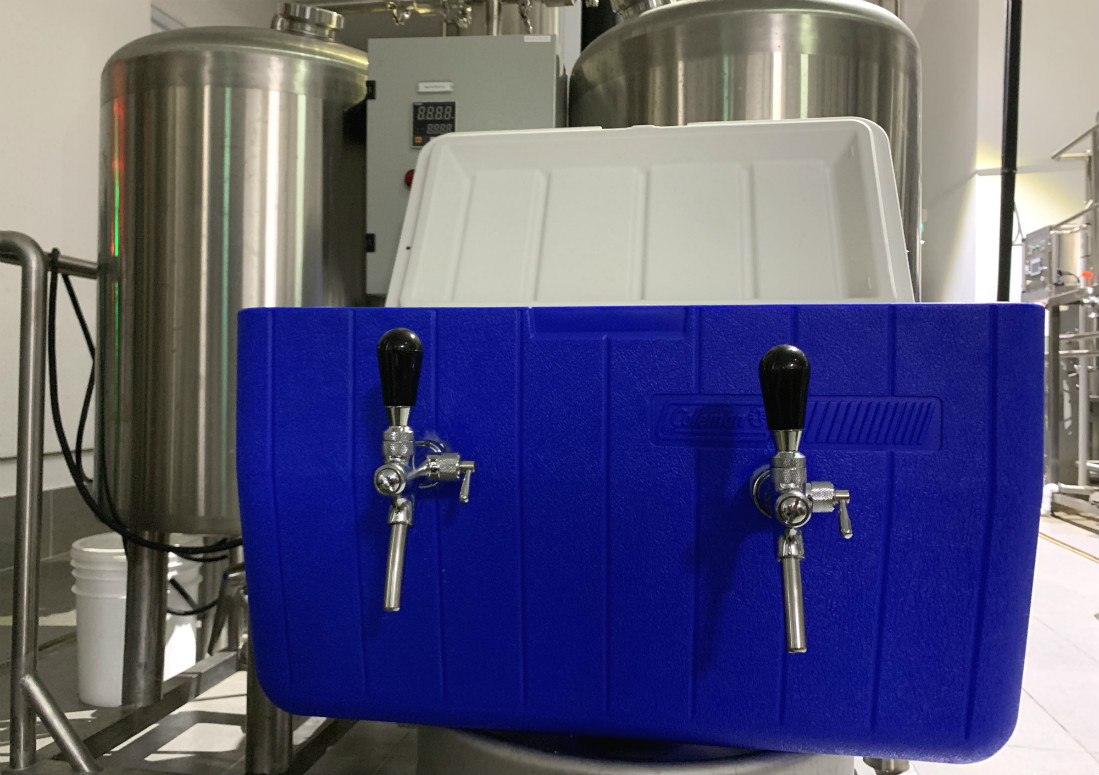

“Every few weeks we do something new, but it’s tough. It’s taking a toll on my health,” he says. “I’m here every day; I mean, besides the hours I’m sleeping I’m here all the time. Last week I had to dump a whole batch of beer because I just wasn’t happy with it. That was a lot of hard work, too, a sour I spent three days of my life working on—three 12-hour days—but one thing led to another, so I decided to clear our tank and do it again.”
Long hours in solitude are the norm for entrepreneur craft brewers like Teo, who recently hired an assistant brewer. Until then he had only a cousin’s occasional assistance as he handled every aspect of the business, from brewing to sales and social media. The work ethic is certainly admirable, though it’s fair to question the decision to launch a self-funded $500K brewery without allocating some resources to a support staff, even if just a part-time one.
Related: In Singapore, Cutting-Edge Beers in a Most Unlikely Place
On the other hand Teo seems to thrive on the unconventional, at least as that pertains to Singapore. “I think we’re an oddball of sorts,” he says. “A lot of people do what makes sense for the business, and wearing the hat of a business owner complicates the decision to do things like dump beers because they’re not up to expectations, but I think that’s what craft beer should be. We will stay true to this philosophy.”
When I spoke recently with one of the more successful local importers, he said Singapore is “pretty much the worst place to brew beer.” Space is limited (and expensive); ingredients are expensive; on top of that, local breweries pay the same excise duty and Goods and Services Tax (GST) as imports. Take those tight margins, factor in the locals’ smaller brew sizes compared to overseas competitors, and what you often get is similar pricing between the two groups in beer bars.
As an example—not necessarily an apples-to-apples comparison—a menu check at American Taproom showed a 16oz glass of That Singapore Beer Project’s Kiam Sng Di, a 4.5% gose, at $18, the same as Garage Project’s Party & Bullshit IPA (6.2%), Hitachino Nest’s Espresso Stout (7%), and Brouwerij Verhaeghe’s Duchesse de Bourgogne (6%), the latter a blended Flemish red ale aged in oak.
In short, regardless of quality local breweries are at somewhat of a disadvantage in the ongoing pricing wars. The cost involved to brew heavily hopped, high-alcohol beers in Singapore is without question a deterrent.
Teo is unfazed, but admits that some peers probably shake their heads at the duties levied on, say, his 7.2% saison (a beer style that’s typically a hard sell here) or series of extravagantly hopped DIPAs and New England IPAs. So many hops go into those latter two beers that Teo says suppliers often show up at the taproom out of curiosity for this young brewery buying all those hops. He is quick to note, however, that he is not out to brew the island’s hoppiest, haziest, or strongest beers.

“To me, we always have to brew with this terrible weather as a backdrop. No one is going to drink a syrupy, viscous imperial stout,” Teo says. “But I don’t subscribe to the approach of appealing to the masses with something light and easy. A beer can still be very flavorful, but it needs to be balanced and easy to drink. It’s never about chasing the highest ABV; to me the ABV is a byproduct, it’s incidental. Everything here is chasing a particular kind of flavor.”
When I ask Teo to name the beer of which he’s most proud thus far, he immediately picks the saison. “There’s no fancy grist bill, no fancy hops… it’s all about the yeast and controlling the conditions for them to thrive,” says Teo. “It’s a flavorful beer that’s sessionable at the same time. It’s something that embodies all the philosophies that we have.”
Name That Beer
Don’t Stop Believing is Pink Blossoms’ third core beer. The other two are Lean on Me, a 5.5% dry-hopped New England pale ale, and Hundred Years, a 5.5% milk stout. Of the brewery’s roughly 30 beers released when this went to press, only one other—Live and Let Die—had a proper name.
Don’t Stop Believing, Lean on Me, Live and Let Die… see a pattern? Yep, they’re all song names.
“We only name our beers when there’s something special about them. With the milk stout, we wanted to celebrate a spirit of adventure, and I chose “100 Years” [by Five for Fighting] because if you only have 100 years, why not try something new?” says Teo. “Many people avoid stouts in this part of Asia because they think stouts have to be intense and bitter, something their grandpa drinks. So we chose a sweet stout still rich in flavor, but very different.”
“Every beer celebrates a certain theme that makes our lives beautiful.”
Epilogue
This year the Tabebuia rosea unexpectedly bloomed a third time, in October, a hot and wet month that followed several months with far less rainfall than usual. The arresting salvo of hot pink across the city was short-lived.
###
Pink Blossoms Brewing is located at 50 Ubi Ave 3, #01-12. +65 6612 0215. Open Monday to Friday 5pm – 11pm, weekends 2pm – 11pm. pinkblossomsbrewing.com
All photos copyright Beer Travelist unless indicated. This story was written to the sounds of Mellow Beats, plus a little Pelican.


